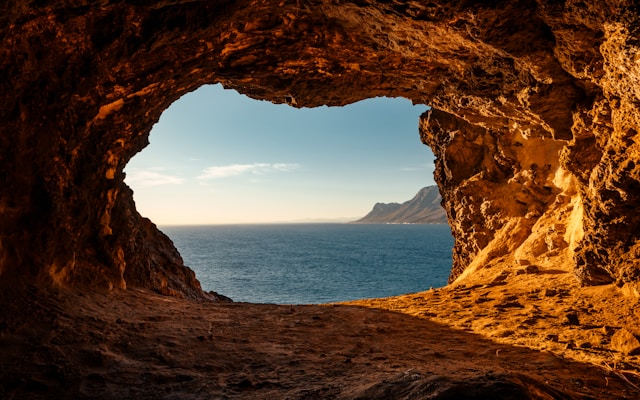Caving, or spelunking, is one of the most thrilling and awe-inspiring adventure activities you can undertake. Beneath the Earth’s surface lies a secret world full of hidden beauty, ancient formations, and natural wonders. However, this subterranean realm is not without its dangers. Many caves offer an enticing challenge for adventurers, but they also pose serious risks. From slippery floors to unpredictable weather and treacherous rock formations, some caves demand great caution and expertise. In this article, we’ll explore some of the most dangerous yet stunning caves around the world—locations where only the boldest adventurers should tread, but also places where breathtaking beauty awaits those who dare to explore them.
1. Carlsbad Caverns, USA
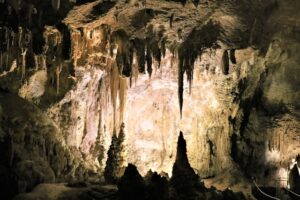
Location: New Mexico, USA
Danger Level: Moderate to High (due to vertical drops and tight passages)
Carlsbad Caverns National Park is a UNESCO World Heritage site that features over 119 caves. Among them, the Carlsbad Cavern itself is one of the most beautiful and awe-inspiring in the world. Its vast chambers, towering stalactites, and incredible formations are a true testament to the Earth’s geological forces. However, exploring the cave can be dangerous, especially in areas like the “Devil’s Hall,” which is a narrow passage that requires careful maneuvering. Additionally, there are steep, uneven surfaces and vertical drops, so having the proper gear and expertise is essential.
The cave is also home to a unique phenomenon—the bat flight. Each evening, thousands of Mexican free-tailed bats leave the cavern in search of food. Witnessing this spectacle is an unforgettable experience, but adventurers must take care not to disrupt the bats or stray from marked paths.
2. Waitomo Caves, New Zealand
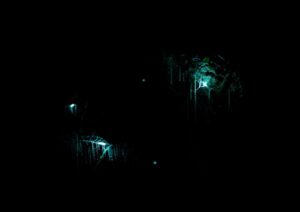
Location: North Island, New Zealand
Danger Level: Moderate (due to water hazards and slippery rocks)
Known for its glowing bioluminescent worms, Waitomo Caves is one of the most popular tourist destinations in New Zealand. The caves’ glow-worms light up the underground tunnels in an ethereal display that has captivated visitors for years. However, this otherworldly beauty comes with its risks. The caves can be slippery, and water levels in some areas can rise unexpectedly, creating flooding hazards. Furthermore, some of the more difficult passageways require advanced caving skills, as they can be narrow and treacherous.
For those who seek a more extreme experience, you can also try “black-water rafting”—a thrilling adventure that involves navigating the dark, water-filled caves while floating on an inflatable tube. Although this activity is safe when done with a guide, the caves’ slippery surfaces and unpredictable water currents can still pose dangers.
3. The Cave of Crystals (Cueva de los Cristales), Mexico
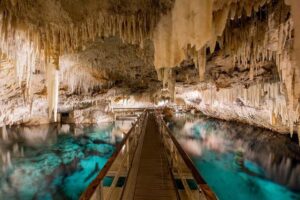
Location: Naica Mine, Chihuahua, Mexico
Danger Level: Very High (due to extreme heat and humidity)
The Cave of Crystals, located in Mexico’s Naica Mine, is one of the most stunning—and dangerous—caves in the world. The cave is famous for its enormous selenite crystals, some of which are over 36 feet long. The environment inside the cave is otherworldly, with massive mineral formations gleaming in the dim light.
However, the extreme conditions make this cave highly dangerous. The temperature inside the cave can reach a sweltering 136°F (58°C), with humidity levels soaring above 90%. These conditions make the cave nearly impossible to explore without specialized equipment, such as cooling suits and oxygen tanks. Only a few explorers have ventured into the cave, as the conditions can quickly lead to dehydration, heat stroke, or exhaustion.
4. Postojna Cave, Slovenia
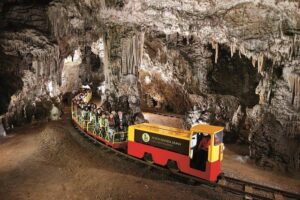
Location: Postojna, Slovenia
Danger Level: Moderate (due to tight spaces and occasional flooding)
Postojna Cave in Slovenia is one of Europe’s most famous karst caves, with a length of over 24 kilometers. The cave is famous for its impressive stalactite and stalagmite formations, as well as its complex network of tunnels. While the cave has been extensively developed for tourism with an underground train that takes visitors deep into its heart, the more remote sections of the cave can be dangerous to explore.
The narrow, slippery walkways and occasional flooding can pose risks, especially during the wet season. Caving in Postojna also requires significant preparation, as some parts of the cave are difficult to navigate due to the tight spaces and rough terrain. Despite these hazards, the cave’s natural beauty is unmatched, with giant formations and ethereal stalactites that make it a must-see destination for adventurers.
5. Phong Nha-Kẻ Bàng Caves, Vietnam
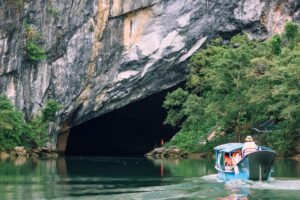
Location: Quảng Bình Province, Vietnam
Danger Level: High (due to remote location and unpredictable weather)
Phong Nha-Kẻ Bàng National Park is home to some of the largest and most spectacular caves in the world. The Son Doong Cave, the largest cave on Earth, is part of this region, offering explorers an incredible underground landscape. However, this stunning environment is far from easy to access. The caves here are deep within a dense jungle, requiring long treks to get to the entrance. The weather can also change rapidly, with heavy rainfall that can cause flash flooding within the caves.
Navigating through these caves often involves wading through water, climbing steep rock formations, and crawling through tight passages. The sheer size and isolation of some of these caves can be both exhilarating and overwhelming. Only experienced and well-prepared adventurers should consider entering the remote caves of Phong Nha-Kẻ Bàng.
6. Chauvet Cave, France

Location: Ardèche, France
Danger Level: Moderate (due to preservation restrictions)
Chauvet Cave is a masterpiece of prehistoric art, featuring some of the oldest known cave paintings in the world, dating back over 30,000 years. These images, which include depictions of animals like lions, bears, and mammoths, offer an extraordinary glimpse into ancient human life.
However, the cave is off-limits to the public in order to protect the delicate paintings. Only a few experts are allowed inside, and unauthorized access is strictly prohibited. The fragility of the cave’s ecosystem and artwork makes it dangerous to the preservation of the site itself. While modern tourists cannot explore the actual Chauvet Cave, a replica cave nearby offers a chance to experience this incredible site virtually.
7. Wellington Caves, Australia
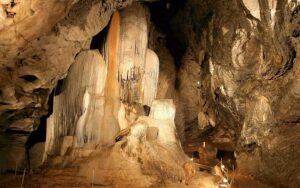
Location: New South Wales, Australia
Danger Level: Moderate (due to uneven surfaces and vertical climbs)
The Wellington Caves are a series of limestone caves that have captivated visitors for years. Located in New South Wales, Australia, these caves are home to impressive stalactites and stalagmites. The caves’ ethereal beauty, with massive formations that seem almost otherworldly, makes them a must-visit for caving enthusiasts.
However, parts of the cave system are challenging to navigate. Some passages require squeezing through narrow openings, while others involve climbing steep, slippery rock surfaces. The cave also has areas with low ceilings and sharp formations that can be dangerous if you’re not careful. Visitors should always go with a guide to ensure safety and explore the caves in groups.
8. Lechuguilla Cave, USA
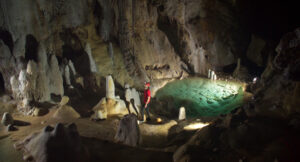
Location: Carlsbad, New Mexico, USA
Danger Level: Extreme (due to vertical passages and lack of oxygen)
Lechuguilla Cave in New Mexico is one of the most famous and complex caves in the world. It’s known for its otherworldly beauty, including delicate, white formations and vast underground chambers. Lechuguilla Cave has also remained relatively untouched by human exploration, which means that it’s pristine and incredibly well-preserved.
However, the cave is highly dangerous to navigate. It has vertical passages, narrow tunnels, and a lack of oxygen in certain areas. Cavers must be highly experienced and prepared for technical challenges, as the cave’s extreme conditions can quickly become life-threatening for the unprepared. Due to the challenging nature of the cave and its difficulty of access, it’s one of the most exclusive and perilous caving experiences on Earth.
Final Thoughts
Caving offers unparalleled adventure, but it’s essential to remember that these natural wonders come with inherent risks. The caves listed here provide a mix of stunning geological formations, rare wildlife, and ancient art, but they also demand respect, skill, and careful planning. Exploring these caves should never be taken lightly; whether you’re navigating tight, slippery passages or enduring extreme temperatures, preparation is key. Always go with a guide if you’re unfamiliar with the cave, wear the appropriate gear, and most importantly, respect the delicate ecosystems that thrive in these mysterious underground worlds.
Whether you are an experienced spelunker or just a curious adventurer, these caves represent the most dangerous yet beautiful destinations for those who dare to explore the depths of our planet.
Start planning your next adventure, Click here for a guide on how to do it.

